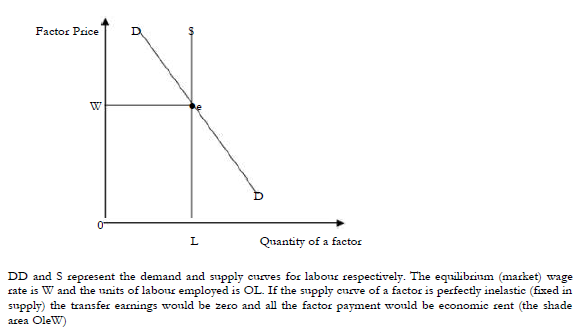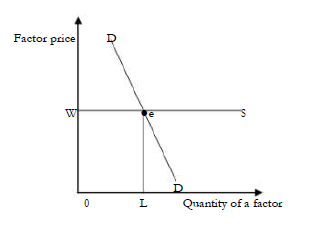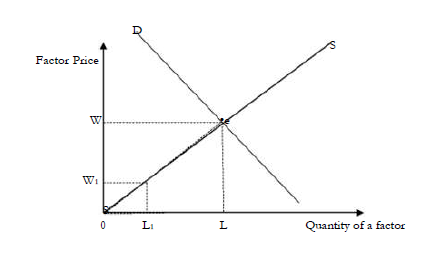1. Case where total factor payments = Economic rent:

2. Case where the total factor payments = transfer earnings:

In the case where the supply of a factor is perfectly elastic the whole earnings to the factor will be transfer
earnings. If a price lower than OW is offered, the factor will not be supplied to the firm. Thus, the whole
earnings represented by the area OleW represent transfer earnings (pure transfer earnings)
3. Case where the total factor payments are shared between transfer earnings and economic rent:

DD and SS represent the demand and supply curves for labor respectively. The equilibrium wage rate is
W and the labor force employed is OL units. The area OleW represents the total earnings to the factor.
The supply curve (SS) shows the number of workers willing to work at different wage rates. Units of
labor less than L will be willing to work at lower wage rates less than OW. OL1 units of labor would
have still supplied labour at the wage rate OW1. Thus OL1 units of labor when paid a wage rate of OW
receive more than what is necessary to keep the factor in the present employment (that is the factor earns
an economic rent). The same can be said of all other units of labor to the left of OL. It is only the Lth
unit of labour which is paid transfer earnings. Thus the area SeLO (shaded area) represents transfer
earnings while SeW represent economic rent, which is a surplus (producer surplus). The steeper the
supply curve the more economic rent would be earned.
Wilfykil answered the question on
February 6, 2019 at 09:54